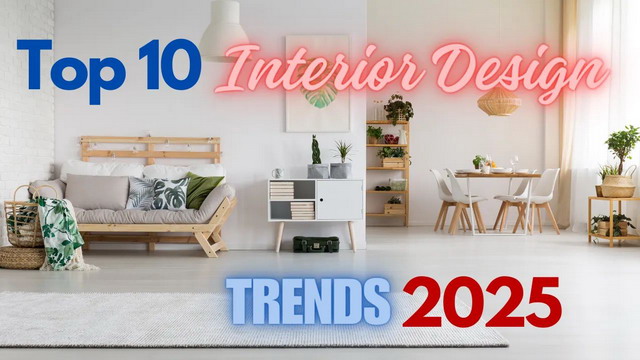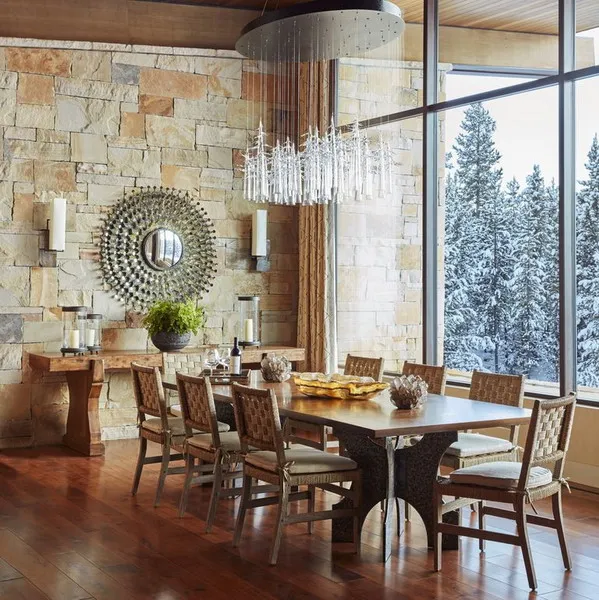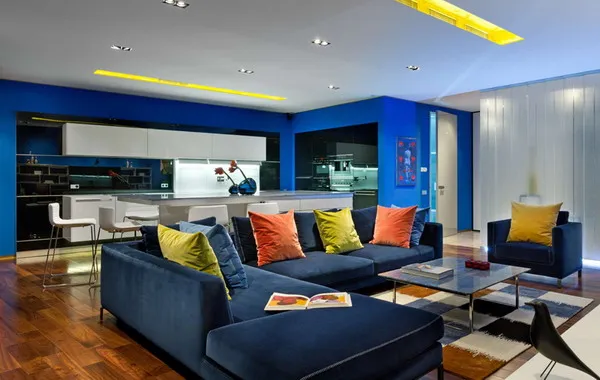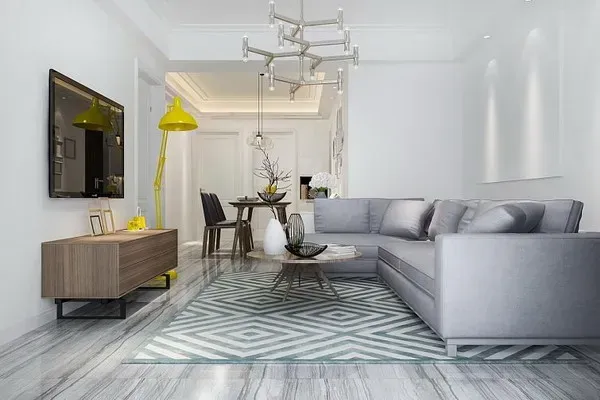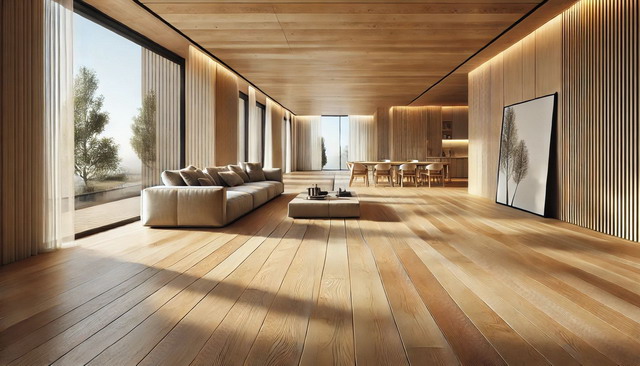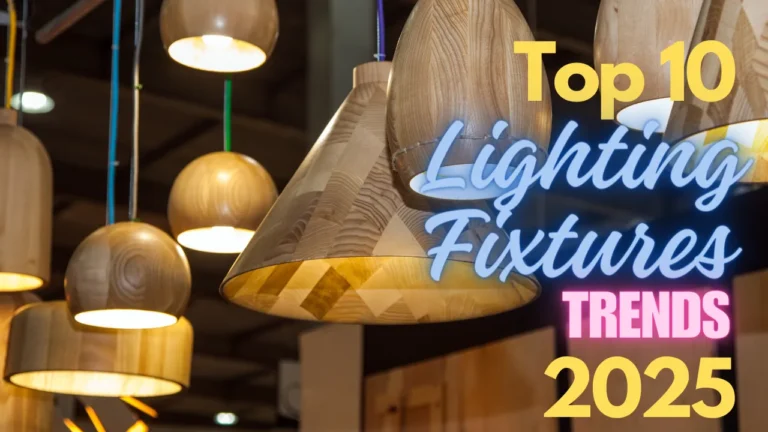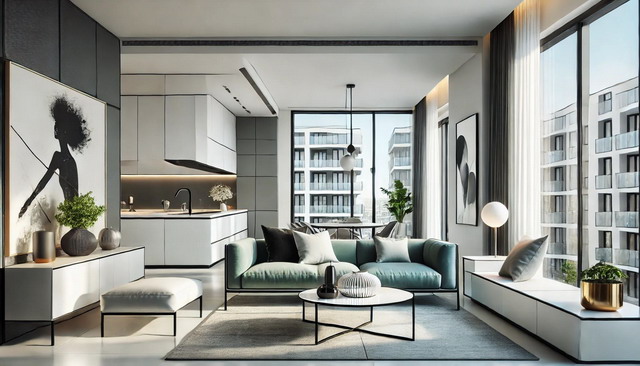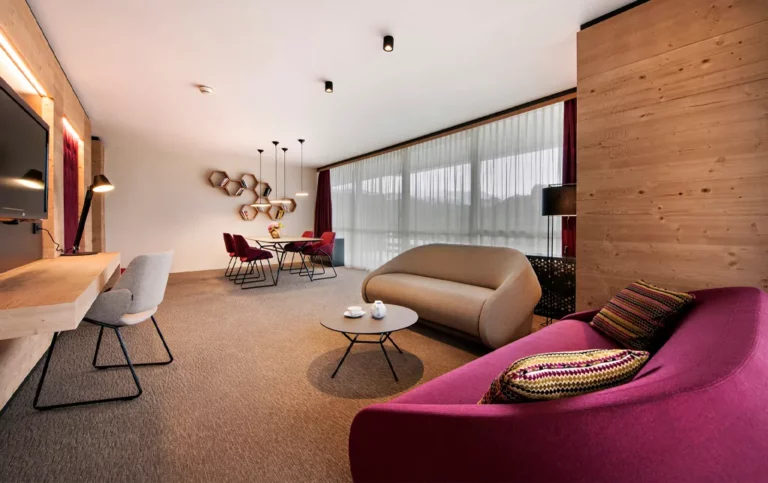Top 10 Interior Design Trends of 2025
Last Updated on July 18, 2024 by Mutiara
Interior design is a dynamic field, constantly evolving to reflect changing tastes, technologies, and societal priorities. As we approach 2025, several emerging trends are shaping the way we think about and create our living spaces. This article explores the top 10 interior design trends expected to dominate in 2025, providing insights into how to incorporate these trends into your home or workspace. Additionally, a FAQs section addresses common questions about these trends.
1. Sustainable and Eco-Friendly Design
Sustainability has become a cornerstone of modern design, reflecting a broader societal shift towards environmental consciousness. In 2025, sustainable design will continue to gain prominence, emphasizing the use of recycled and upcycled materials, energy-efficient appliances, and eco-friendly finishes.
Key Features:
- Recycled and Upcycled Materials: Furniture and decor made from reclaimed wood, recycled metals, and repurposed textiles.
- Energy-Efficient Appliances: Smart thermostats, LED lighting, and Energy Star-rated appliances.
- Eco-Friendly Finishes: Non-toxic paints, natural fibers, and sustainable flooring options like bamboo and cork.
Benefits:
- Reduced environmental impact.
- Healthier indoor air quality.
- Long-term cost savings through energy efficiency.
2. Biophilic Design
Biophilic design integrates natural elements into interior spaces, fostering a connection with the natural world. This trend enhances well-being by incorporating greenery, natural light, and organic materials into homes and offices.
Key Features:
- Greenery: Indoor plants, living walls, and rooftop gardens.
- Natural Light: Large windows, skylights, and light wells.
- Organic Materials: Wood, stone, and natural fibers.
Benefits:
- Improved mental and physical health.
- Enhanced mood and productivity.
- Aesthetic appeal and tranquility.
3. Minimalism with a Twist
Minimalism remains popular, but 2025 sees a shift towards more personalized and eclectic touches. This trend balances simplicity with statement pieces, creating spaces that are both functional and reflective of personal style.
Key Features:
- Simplicity: Clean lines, uncluttered spaces, and neutral color palettes.
- Statement Pieces: Bold artwork, unique furniture, and vibrant accents.
- Personal Touches: Family heirlooms, travel souvenirs, and custom-made items.
Benefits:
- Reduced stress and clutter.
- Greater sense of individuality.
- Timeless and versatile design.
4. Smart Home Integration
Advances in technology are transforming homes into smart, interconnected spaces. Smart home integration includes automated lighting, climate control, security systems, and voice-activated assistants, seamlessly blending technology with interior design.
Key Features:
- Home Automation: Centralized control of lighting, heating, and appliances.
- Smart Devices: Voice-activated assistants, smart thermostats, and security cameras.
- Integrated Systems: Seamless design that incorporates technology into decor.
Benefits:
- Enhanced convenience and efficiency.
- Improved security and energy management.
- Future-proofing homes for technological advancements.
5. Multifunctional Spaces
With urban living spaces becoming more compact, multifunctional design is crucial. This trend focuses on creating versatile rooms that serve multiple purposes, such as living rooms that double as home offices or guest bedrooms.
Key Features:
- Versatile Furniture: Sofa beds, fold-out desks, and expandable dining tables.
- Adaptable Layouts: Movable partitions, modular furniture, and flexible storage solutions.
- Dynamic Design: Spaces that easily transition between different functions.
Benefits:
- Maximized use of limited space.
- Increased functionality and adaptability.
- Cost-effective and efficient living solutions.
6. Bold Colors and Patterns
While neutral tones have long dominated interior design, 2025 marks a shift towards bolder colors and patterns. Vibrant hues and intricate patterns add personality and energy to spaces, making them more lively and engaging.
Key Features:
- Vibrant Color Palettes: Rich jewel tones, bold primary colors, and deep pastels.
- Patterned Textiles: Geometric prints, floral patterns, and abstract designs.
- Accent Walls: Statement-making walls with bold paint or wallpaper.
Benefits:
- Enhanced visual interest and character.
- Greater expression of personal style.
- Opportunities for creative experimentation.
7. Vintage and Retro Revival
Nostalgia plays a significant role in 2025’s interior design trends, with vintage and retro elements making a comeback. This trend involves blending classic designs with contemporary touches to create timeless and unique spaces.
Key Features:
- Retro Furniture: Mid-century modern, Art Deco, and 70s-inspired pieces.
- Vintage Decor: Antique accessories, retro lighting, and classic artwork.
- Mixed Eras: Combining elements from different time periods for a curated look.
Benefits:
- Timeless and enduring style.
- Unique and personalized interiors.
- Sustainable use of vintage and antique items.
8. Textured Surfaces and Materials
Texture adds depth and interest to interior spaces, and 2025 sees a rise in the use of tactile and textured surfaces. Popular materials include stone, wood, and a variety of fabrics, creating a rich, layered aesthetic.
Key Features:
- Natural Textures: Exposed brick, stone walls, and raw wood finishes.
- Tactile Fabrics: Velvet, wool, and linen upholstery.
- Layered Materials: Combining different textures for a dynamic look.
Benefits:
- Enhanced visual and tactile appeal.
- Cozy and inviting atmospheres.
- Opportunities for creative design.
9. Personalized and Customizable Spaces
Personalization continues to be a significant trend, with growing demand for bespoke designs. Custom furniture and decor allow individuals to create spaces that reflect their tastes and lifestyles.
Key Features:
- Bespoke Furniture: Custom-made sofas, tables, and cabinetry.
- Personalized Decor: Tailored artwork, personalized accessories, and custom finishes.
- Unique Layouts: Floor plans designed to meet specific needs and preferences.
Benefits:
- Unique and individual interiors.
- Higher satisfaction and comfort.
- Increased property value.
10. Wellness-Oriented Design
Wellness-oriented design focuses on creating environments that promote health and well-being. This trend includes the use of natural light, indoor plants, ergonomic furniture, and calming color schemes to enhance overall wellness.
Key Features:
- Natural Light: Maximizing windows and using reflective surfaces to increase light.
- Indoor Plants: Incorporating a variety of plants for improved air quality and aesthetics.
- Ergonomic Furniture: Furniture designed to support physical health and comfort.
Benefits:
- Enhanced physical and mental well-being.
- Reduced stress and improved relaxation.
- Aesthetic and functional living spaces.
FAQs
Q: How can I incorporate sustainable design into my home?
A: Start by choosing eco-friendly materials, such as reclaimed wood and recycled metal. Opt for energy-efficient appliances and use non-toxic finishes. Incorporating plants and maximizing natural light can also enhance sustainability.
Q: What are the benefits of biophilic design?
A: Biophilic design improves mental and physical well-being, enhances mood and productivity, and creates aesthetically pleasing environments. It fosters a connection with nature, which can be especially beneficial in urban settings.
Q: How do I achieve a minimalist design with a personal touch?
A: Focus on simplicity and clean lines while incorporating statement pieces that reflect your personality. Use a neutral color palette as a base and add bold accents, unique furniture, and personal mementos to create a balanced look.
Q: What are some examples of smart home integration?
A: Examples include automated lighting and climate control systems, voice-activated assistants like Alexa or Google Home, smart security cameras, and integrated entertainment systems. These technologies can be seamlessly incorporated into your decor.
Q: How can I make the most of multifunctional spaces?
A: Invest in versatile furniture, such as sofa beds and fold-out desks, and use movable partitions to create adaptable layouts. Consider modular furniture that can be easily reconfigured and prioritize efficient storage solutions.
Q: What are the best ways to use bold colors and patterns?
A: Start with small accents, such as throw pillows, rugs, or artwork, and gradually incorporate bolder elements like accent walls or patterned furniture. Balance vibrant colors with neutral tones to avoid overwhelming the space.
Q: How can I blend vintage and modern elements?
A: Choose a few key vintage pieces and mix them with contemporary decor. Look for items from different eras that complement each other and create a cohesive look. Be mindful of color palettes and materials to ensure harmony.
Q: What are some popular textured materials for 2025?
A: Popular materials include exposed brick, natural stone, raw wood, velvet, wool, and linen. Combining different textures can add depth and interest to your space, creating a cozy and inviting atmosphere.
Q: Why is personalized design important?
A: Personalized design ensures that your space reflects your tastes, needs, and lifestyle. It enhances comfort and satisfaction, making your home uniquely yours. Bespoke designs can also increase the value of your property.
Q: How does wellness-oriented design improve living spaces?
A: Wellness-oriented design promotes health and well-being through the use of natural light, indoor plants, ergonomic furniture, and calming color schemes. These elements reduce stress, improve relaxation, and create aesthetically pleasing environments.
Conclusion
The interior design trends of 2025 reflect a growing emphasis on sustainability, well-being, and personalization. From eco-friendly materials to biophilic design, and from smart home technology to bold colors, these trends offer diverse ways to enhance living spaces. By embracing these trends, you can create a home that is not only stylish but also functional, sustainable, and reflective of your unique personality.
